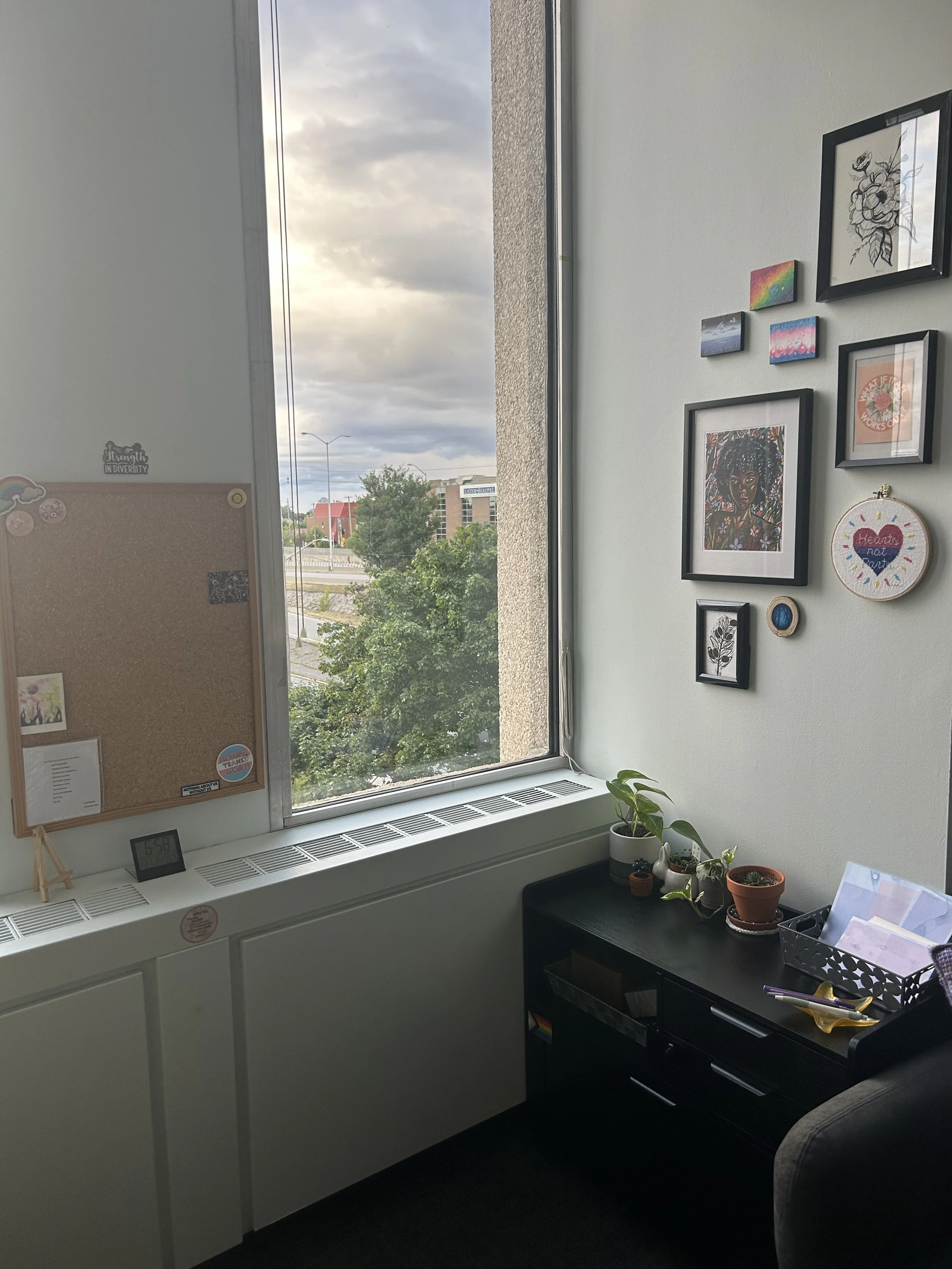My standard fee for therapy is $160.
In efforts to make therapy more accessible to clients, I also offer a sliding scale option alongside my standard rate.
I understand that, while an important resource, therapy is often inaccessible because of limited access to insurance and difficulty paying out of pocket. I also know that the barriers to receiving consistent mental health care become even more insurmountable for those in marginalized populations, due to systemic conceptions of ability, race, and identity.
In an ideal world, these barriers to healthcare would be non-existent. Offering a sliding scale option is my way of supporting that value while also valuing my own needs and time.
Ultimately, I hope that this model gives clients the chance to choose what rates best fits their needs and mitigates any barriers to care that may have come up in the past.
So, how does it work?
I use a self-selection model, where the client and I collaboratively figure out a reasonable rate that works for their current circumstances.
The scale starts at 50% of my standard rate (i.e., $80) and goes up to $160. This means that anything between the minimum $80 and the maximum $160 works for me.
Generally, if you have insurance that covers psychotherapy, I ask that you pay my standard rate. However, if your annual allowance is limited (i.e., 5 sessions total, $300 max) and/or would impact the frequency of our sessions (i.e., every three weeks, monthly), please select a rate that allows you to come at the frequency you need, but is also accessible for you when your insurance runs out.
Do you have any guidelines that would help me determine my rate?
Actually, yes! Inspired by the sliding scale guide from hairstylist Courtney Rice, here are some general considerations that may help when selecting a rate for you:
Consider choosing a higher rate if:
you own the home you live in;
you can afford to travel recreationally once in a while;
you have investments, retirement savings, or generational wealth;
you have the choice not to work (different from impacts of disability, including mental health);
affording therapy would be a trade-off with a luxury expense (i.e., a vacation, a trip to the spa, a new video game system, a tattoo)
Consider choosing a lower rate if:
you are housing insecure (spending more than half your income on housing);
you are unemployed, on ODSP, or similar public assistance;
you make minimum wage and have difficulty earning higher income due to educational background, class background, disability, racial and gender disparities, etc.;
you belong to a marginalized group(s) (i.e., 2SLGBTQIA+ clients, particularly trans clients, racialized clients, disabled clients);
affording my full-rate service would be a hardship (i.e., would disrupt your ability to pay rent, buy groceries, afford transportation, or develop savings)



